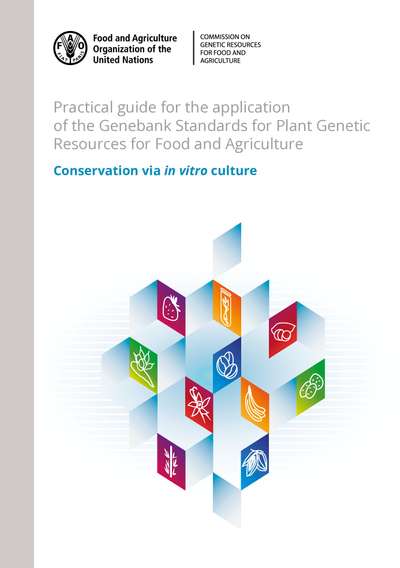FAO Publications Practical guide for the application of the Genebank Standards for Plant Genetic Resources for Food and Agriculture - Conservation via in vitro culture
Published: 2022-01-20

Many field and horticultural crops as well as agroforestry species are difficult or impossible to preserve as seeds. These include: species that only produce recalcitrant seeds with a short lifespan in seed storage; species for which seed production may take many years, as is the case for many tree species: species that are heterozygous and therefore do not produce true-to-type seeds; and species that do not produce seed at all and are vegetatively propagated. Other examples include males of dioecious species and rare plants that are under threat of overgrazing and for which time to produce seeds before the population totally vanishes is limited. In vitro conservation offers an option for these species. Additionally, in vitro techniques provide a germplasm storage procedure that combines the possibility of disease elimination with that of rapid clonal propagation, thus providing a means by which germplasm can be safely exchanged and distributed.
In vitro slow growth storage techniques are being routinely used for medium-term conservation of numerous species of both temperate and tropical origin, including crop plants (e.g. potato, yam and cassava), and rare and endangered species. Germplasm can be stored for between several months and 2–3 years without subculture, depending on the technique used and the genotype of the plant material.